Owendoon
Houses within 10km of this house
Displaying 18 houses.
Houses within 10km of Owendoon
Displaying 18 houses.
| House name | Description | |
|---|---|---|
| Woodford | Woodford was the residence of Robert J. Gore at the time of Griffith's Valuation when it was valued at £15. In 1814 it was occupied by John Gore. Both Taylor and Skinner and Wilson also record it as a seat of the Gore family in the 1780s. The house at Woodford Demesne, described as "formerly the residence of the Rev. Gore" was "formerly a genteel residence but now in a ruinous state" at the time of the first Ordnance Survey in 1835. Lewis records it as the seat of Ormsby Gore in 1837. In 1906 it was the property of Emily Upperton and was valued at £19. The National Inventory of Architectural Heritage states that it retains little original fabric but much of the estate architecture, including the site of the walled garden survives. There is also an earlier castle at this site. |

|
| Corduff House | The National Inventory of Architectural Heritage estimates that Corduff House was built c.1780. William Penrose was occupying the house at Corduff, barony of Carrigallen, at the time of Griffith's Valuation when it was valued at £8. Corduff House is recorded as the seat of the Penrose family by Lewis in 1837. In 1814 it was the residence of George Percy. The house is still extant and occupied. |
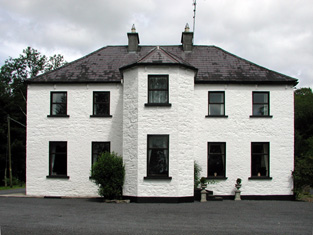
|
| Willowfield | Alexander Percy was occupying the house at Aghatawny, known as Willowfield, at the time of Griffith's Valuation when it was valued at £10.Lewis records it as a seat of the Percy family in 1837. In 1814 it was the residence of William Shanley. Both Taylor and Skinner and Wilson also record it as a seat of the Shanley family in the 1780s. The building is still extant. | |
| Garadice | John Percy was leasing the house at Garadice, barony of Carrigallen, from the representatives of William Percy at the time of Griffith's Valuation when it was valued at £15. In 1814 it was noted as a residence of the Percy family. Lewis records it as the seat of W.C. Percy in 1837. In the 1780s both Taylor and Skinner and Wilson noted Garadice as a Percy residence. The ITA survey recorded it as much deteriorated in the 1940s. It also mentions the existence of a second house belonging to the Percy family in the townland of Carrickmakeegan. The buildings are still extant at Garadice. | |
| Boeeshil House | At the time of Griffith's Valuation William Shanley was leasing a property at Boeeshil, barony of Carrigallen, incuding a house and corn mill, valued at £20, from the Percy estate. There are three mills shown at the site on the 1st edition 6" OS map, including a corn, bleach and flax mill. Lewis records this property as belonging to the Gerard family. | |
| Templeport House | Templeport House was built about 1860 on part of the Dobbin estate. It is situated north east of Templeport Lough and may occupy the site of a former herd’s house. Robert Roycroft of Templeport House died in 1881, aged 64 and was buried in Templeport graveyard. |
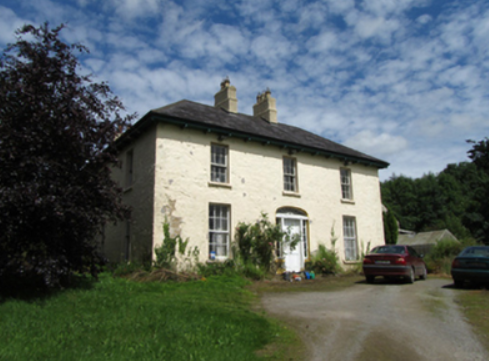
|
| Greenville (Cavan) | The Thorntons were located at Greenville from the 18th century. The house was situated east of Greenville Lough and north of Ardlougher. At the time of Griffith’s Valuation the buildings described as a house, steward’s house, offices and lodge were valued at £40 for rates. The property was held by Perrott Thornton in fee. In 1864 the Greenville estate of William Robert Thornton was advertised for sale in the Landed Estates Court including the house and demesne. In 1876 George Nugent, the owner of 400 acres in county Cavan, is recorded as resident at Greenville, Ardlougher. His estate including Greenville was for sale in November 1880 when the house was described as 'handsome, modern, substantially built, in excellent order, well supplied with water, and fit for the immediate reception of a large family'. The home of Lieutenant Colonel William Alexander Crawford Roe and his wife Emma in 1901 and of the Clifford sisters Olivia and Edith in 1911. In 1906, it was described as a 'mansion' with a rateable valuation of £40. The house is no longer in existence. | |
| Glendoon | At the time of Griffith's Valuation Moses Netterfield held offices and land in the townland of Doon, Ballyconnell, county Cavan, part of the estate of the Earl of Annesley. The National Inventory of Architectural Heritage describes this building as an 'early nineteenth-century house of simple Italianate design'. |
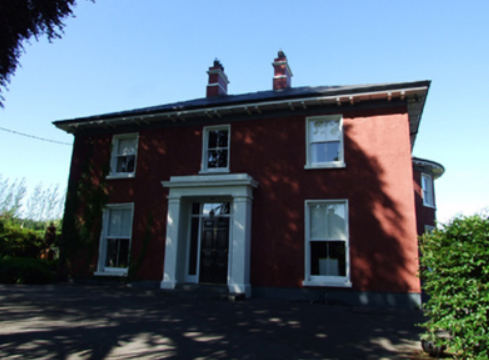
|
| Bilberry Hill | William Stanford of Bilberry Hill was High Sheriff of county Cavan in 1774. This house was the home of the Irwin family from at least 1790 when Daniel Irwin of Bilberry Hill married a Miss E. Faris of Cloncorick. Leet records David Irwin as resident in 1814 and Jane Elvin [Irwin] was the occupant in the 1850s holding the property valued at £10.10.0. from Thomas Irvine [Irwin]. Jane Irwin died at Bilberry Hill in 1876 (Cavan Weekly News, 28 July 1876). The Irwins were succeeded by the Berrys of Berrymount to whom they were related. This house is no longer extant. | |
| Bawnboy House | According to Chris Maguire Bawnboy House was built about 1790 by John Enery see http://www.bawnboy.com/History-Heritage-Folklore/pages/bawnboy-84.html In 1814 Nathaniel Sneyd was occupying the house and by the 1850s John D. Rochfort was owner and occupier. The buildings were valued at £12.15.0. By 1876, the house was occupied by William Johnston and in the early 20th century Bawnboy was the home of Robert Henry Johnstone and family. Mulligan records this house as derelict. The Lawders also held Corr [Cor?] and Bawnboy, see GO MS 182: 96-113 in the National Library. |
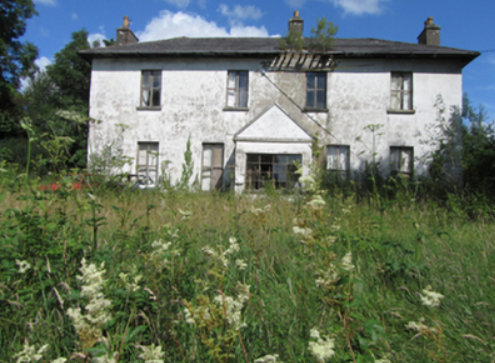
|
| Brackley Lodge | Located very close to the shore of Brackley Lough and originally known as Brackley Lodge, the house was named on the first edition six inch Ordnance Survey map (publ. 1837). The 25 inch map of the early 20th century records its name as Brackley House. The present smaller house replaced the original building in the 1920s. Brackley was the home of John Finlay in the 1850s and in 1876. The house belonged to the Reverend John Finlay of county Carlow but was not occupied by the family at the time of the 1901 census. |
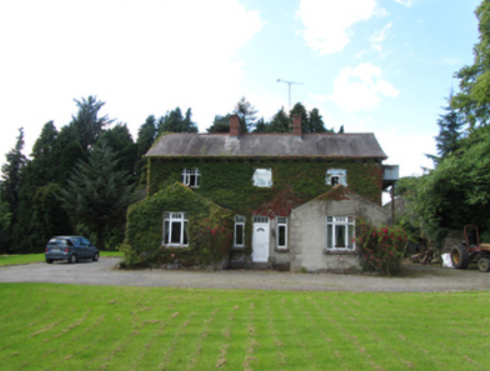
|
| Corville | The Lawder family may have lived in this townland in the early 18th century. Described by the National Inventory of Architectural Heritage as a late Georgian house, Corville is named on the first edition six inch Ordnance Survey map (publ. 1837), located in a small demesne. Like Brackley Lodge it was the home of members of the Finlay family. It was valued at £23.5.0. in the mid-19th century and was occupied by George Finlay who held the property from Sir Thomas Finlay. Francis Finlay, minor, of Corville is listed in the landowners of 1876. By the beginning of the 20th century Corville was the property of Robert Henry Johnston. Thomas Flynn and family were caretaking the house for him in 1901. This house is still well maintained and occupied. |
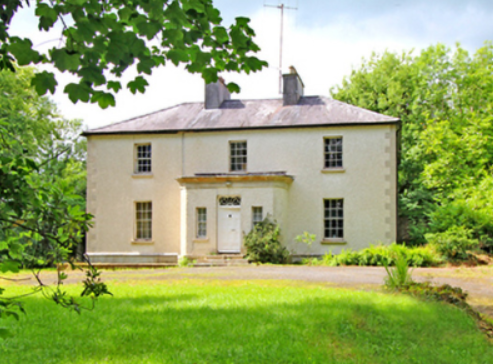
|
| Woodville (Templeport) | Woodville was another Finlay home, built to the north east of Corville circa 1840s. At the time of Griffith’s Valuation it was valued at £12 and was occupied by Francis Finlay who held it from George Finlay. A building still stands on this site. | |
| Lissanover | Members of the Hume family of Lisanober or Lissanover, Co Cavan (and of Castle Irvine, Co Fermanagh) are recorded in the 18th century, see GO MS 141: 102-104. Robert Hume of Linover died in 1777 and was buried in Templeport graveyard. In the 1830s J. Roycroft was resident at Lisnover and in the 1850s Robert Roycroft held the property from William Blachford. It was valued at £12.10.0. for rates. This house was demolished by the early 20th century. | |
| Ballyconnell Castle/House | Ballyconnell Castle was built in 1764 by George Leslie Montgomery to replace a former early 18th century building which was accidently burnt down. Leet records Mrs Storey as resident in 1814 and Lewis records John Enery as the occupier of Ballyconnell House in the 1830s. The Enerys and Montgomerys were related. In the mid-19th century George Roe, a medical doctor, was the owner and occupier, having purchased the property valued at £40 for rates, from the Enerys, when it was described as a ‘spacious and comfortable mansion, with suitable out-offices’. In 1906, Samuel B. Roe was recorded as the occupier when the buildings were valued at £32.10.0. for rates. It is now located in the middle of a housing estate. |

|
| Slieve Russell House | Slieve Russell House was a two storey Victorian lodge, built about 1880 for the Benison family. John Joseph Benison and family were resident in the early years of the 20th century. The house is now derelict. | |
| Berrymount | Berrymount House is named on the first edition six inch Ordnance Survey map (publ. 1837). James Berry was resident in the first half of the 19th century. He held the house and outbuildings valued at £7 from the representatives of John C. Jones. William Berry of Berrymount owned 134 acres in co Cavan in 1876. The Berrys were selling Berrymount in the early 1890s (Irish Law Times and Solicitors Journal, Vol 27, 615). Alexander Morton and family were living at Berrymount in the early 20th century. The house appears to be still extant. | |
| Cranaghan House | Cranaghan House is marked on the first edition six inch Ordnance Survey map (publ. 1837). The 25 inch map of the early 20th century records it as a rectory. The Reverend J. Story of Cranaghan is named on the list of subscribers to Lewis’ ‘Topographical Dictionary’ in 1837. The Reverend Henry Erskine held the house valued at £25 in fee at the time of Griffith’s Valuation. The Reverend Charles Sinclair and the Reverend Mervyn Rogers were the occupants in 1901 and 1911. This building is now the core of the Slieve Russell Hotel. |

